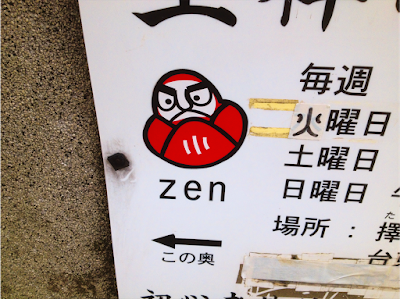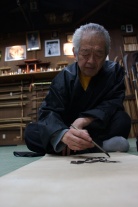From Shiro Kuma's Blog by kumafr
PARIS TAIKAI REGISTRATION >>>> CLICK HERE <<<
What “monkey see, monkey do” is an American expression from the 20s.
Wikipedia (1) tells us that it “refers to the learning of a process without an understanding of why it works”. This is the western approach to the legendary “don’t think!” by Hatsumi sensei.
For a few years now I have considered myself like a silver back, mimicking sensei on the mats, to grasp the essence of his budô. And I have extended that nickname to all students and during seminars. This is the monkey theory.
When you teach, you need to understand why it works the way it is, but when you train, your only concern is to do without understanding. Sensei explained this a few years ago when he said “action led to reflection”.
Since Descartes we were trained to do the opposite, this is the famous “Cogito ergo sum” (2) that has chiseled the western world. But this only applies to non-conscious ribs, not to the human. In the 70s, the Palo Alto Mental Research Group, with Watlawicz already exposed that in human relations (the study was about family relations), only action could be first.
Now to immerse yourself in the action, the only thing is to stop thinking. On the mats, when acting as a student we have to stop understanding and begin to do. We have to become a monkey and act like a monkey. When I watch a wildlife documentary on chimps, I’m always amazed watching their ability to roll. And I don’t think they ever had a teacher or a dōjō.
They learnt by applying the trial and error approach. In fact the Japanese martial arts and is ryûha system is exactly the same. The collection of techniques we have in the Bujinkan survived the battlefields of the period of unification. Only the best techniques and the most efficient reached the 21st century. To put it simple, all waza that was not good enough didn’t make it to us.
Acting like a monkey is the best learning experience we can have. Never try to understand, do it! I remember Senō Sensei explaining that we first try to reproduce a waza we make big mistakes, and then by repeating the waza we tend to lower the amount of errors. This “cleaning” is possible because, after each try, you debrief yourself and learn from your errors. This is Kûden.
Kûden is not only what secrets your sensei will reveal; it is mainly what your inner observation tells you. Making mistakes is normal, learning from them too. What is wrong is when you do not learn from them. In fact, Shikin Haramitsu Dai Komyô exactly means that. Each experience is beneficial to our understanding.
Applying the monkey theory to your training is the best chance you can give yourself to improve your abilities faster.
So be happy to be a monkey!
Arnaud Cousergue
DSBSB (3)
______________________
1. Wikipedia
2. Cogito ergo sum (sorry he was French)
3. DSBSB aka Dai Shihan Bujinkan Silver Back
T-shirt designed by Pablo Giannazzo, Jûdan, Bujinkan Argentina





